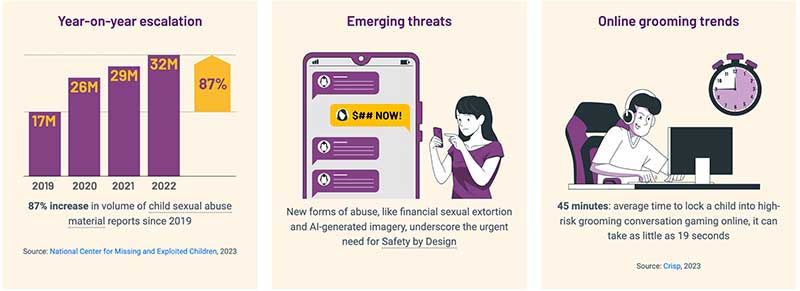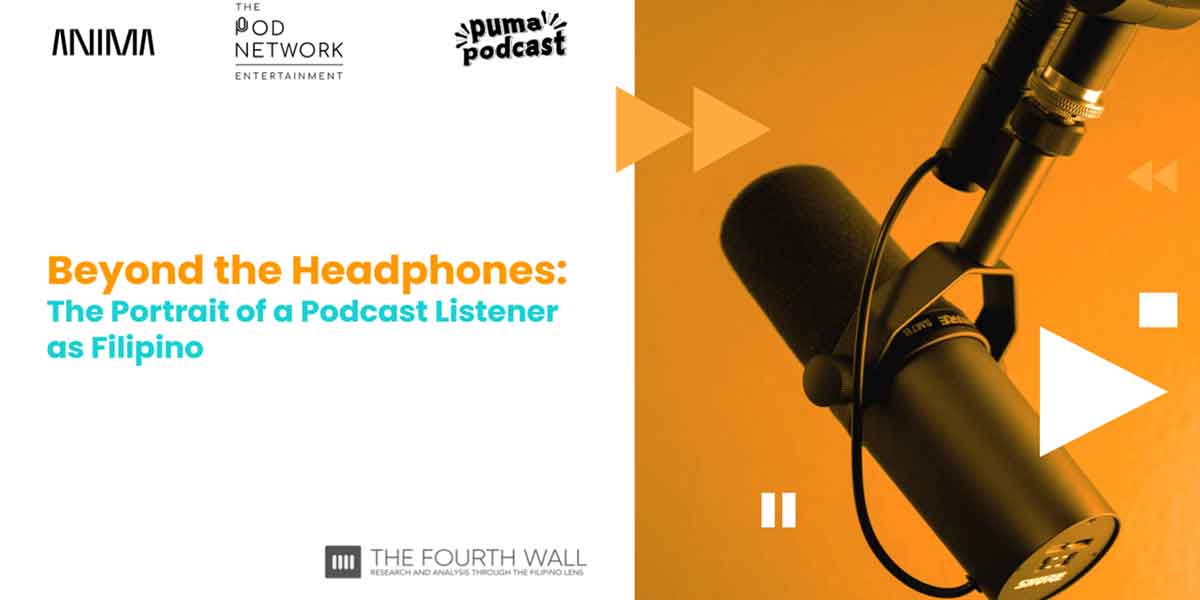
WeProtect Global Alliance recently released its fourth Global Threat Assessment Report, which revealed an 87% increase in reported child sexual abuse material cases since 2019, with over 32 million reports globally (NCMEC).
The findings underscore the pressing need for a coordinated, multi-faceted response to protect the world’s children from this escalating threat.
The report, which provides critical insights into the threats children face online in 2023, also found there has been a 360% increase in self-generated sexual imagery of 7-10-year-olds from 2020 to 2022 (Internet Watch Foundation).
Shockingly, it was also revealed that conversations with children on social gaming platforms can escalate into high-risk grooming situations within 19 seconds, with an average grooming time of just 45 minutes.
Social gaming environments that facilitate adult-child intermingling, exchanging virtual gifts, and public ranking systems significantly increase these risks.
The research found a significant rise in financial sexual extortion, with reports of the harm jumping from 139 in 2021 to over 10,000 reports in 2022.
This involves perpetrators grooming and manipulating children into sharing sexual images and videos of themselves and then extorting them for monetary gain.
Many extorters pose as young girls online and predominantly approach boys aged between 15-17 years old via social media. This phenomenon has resulted in a string of cases where children have tragically taken their own lives.
New technology is heightening the threats that children face online. Since early 2023, cases of perpetrators also using generative Al to create child sexual abuse material and exploit children have been increasing.
Thorn found that while less than 1% of child sexual abuse material files shared in a sample of offender communities are currently photorealistic computer-generated imagery (CGI) of child sexual abuse, the volume has increased consistently since August 2022.
In September 2023, Australia, in a global first, put in place measures that require big tech companies to take steps to ensure AI products cannot be used to generate deepfake images and videos of child sexual abuse.
“Our latest report shows the scale of the threat children face online. Online-facilitated child sexual exploitation and abuse worldwide demands our attention and action right now. New technological capabilities further exacerbate existing risks, and the situation is no different in The Philippines. Children’s safety must be non-negotiable. To prevent more children from coming to harm, governments, online service providers, charities, and companies must step up their efforts and work together to drive change and protect children,” said Iain Drennan, Executive Director of WeProtect Global Alliance.
John Tanagho, Executive Director, IJM’s Centre To End Online Sexual Exploitation Of Children, International Justice Commission, added:
“The 2023 Global Threat Assessment’s revelation that child sexual abuse online is escalating reminds us that the time for change is now. Its finding that sexual imagery of 7-10-year-old children is on the rise should outrage policymakers and corporate executives alike. The report underscores IJM’s recent Scale of Harm finding that nearly half a million Filipino children were sexually abused to create images, videos, and livestreams for sale to offenders globally in 2022 alone.
“Children everywhere urgently need tech companies to deploy safety by design to augment justice system responses and prevent abuse at scale. Online safety regulation, especially in countries home to offenders fueling demand for abuse, is critical to create industry-wide action to protect children online. The Philippine Survivor Network and other survivors are advocating for online safety bills, and their voices remain central in driving effective responses globally.”
Turning the tide on current abuse trends will only be possible with increased prioritization and commitment from all stakeholders involved in the response, empowered and enabled by maturing legislation. To fight back, all stakeholders, including governments, online service providers, civil society organizations, and responders, are urged to:
- Invest in Public Health Approaches: Prioritise prevention and invest in interventions targeting those who have or are at risk of perpetrating or experiencing abuse. If we only invest in responding to the problem after the abuse has happened, we are failing children.
- Centre Children’s Rights and Perspectives: Design interventions that empower children, remove barriers to abuse identification and enable them to hold online service providers accountable.
- Implement Globally Aligned Legislation: Prevent offenders from exploiting legal loopholes by enacting globally consistent internet regulations.
- Adopt a Safety by Design Approach: Implement innovative approaches to technology design that prioritize user safety from the outset, not as an afterthought.
Additional findings:
- Chasm in Children’s Perceptions: A significant gap exists between children’s perceptions of online risks and the actual manifestation of online abuse, with evidence showing that perpetrators are often known to the child and private platforms as where most sexual harm occurs. This highlights the need for improved age-appropriate online safety information and accessible reporting processes.
- Pornography as a Precursor? The report highlights emerging evidence of a correlation between the frequent viewing of pornography and accessing child sexual abuse material.
- Minority groups targeted: Vulnerable minority and marginalized groups, including those based on sexual orientation, race, ethnicity, or disability, are disproportionately exposed to online sexual harm.
- Global instability increases abuse: Poverty, inequality, and global crises, such as the COVID-19 pandemic, the war in Ukraine, and climate change, all contribute to the rise in child sexual exploitation and abuse.
To download the full report, please visit here: weprotect.org/global-threat-assessment-23/



















